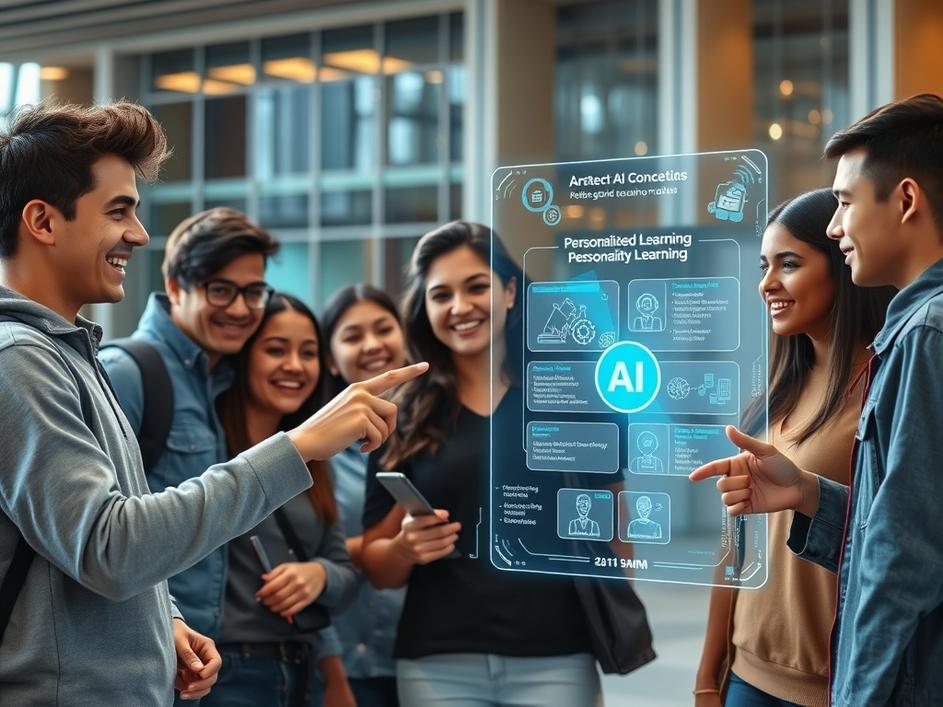


We are a digital agency helping businesses develop immersive, engaging, and user-focused web, app, and software solutions.
2310 Mira Vista Ave
Montrose, CA 91020
2500+ reviews based on client feedback

What's Included?
ToggleThink about the best teacher you ever had. They probably understood how you learned, knew when you were struggling, and helped you find just the right way to grasp tough ideas. Now, imagine if every student, everywhere, could have that kind of personalized support, available whenever they needed it. That’s a big dream, and for a long time, it felt like something out of a science fiction movie. But things are changing fast. There’s a new push happening right now that could bring us a lot closer to that dream, and the coolest part is, students are leading the charge. This isn’t just about computers giving you answers; it’s about smart systems that truly act like a helpful guide, a tutor, or even a coach, built by the very people who know what it’s like to be a student today.
This exciting step forward comes from a unique collaboration that’s putting some serious brainpower and tech muscle behind the idea. We’re talking about Cintana Education, a group that helps universities around the world offer high-quality education, teaming up with Arizona State University (ASU), known for always pushing the boundaries in learning, and Amazon Web Services (AWS), the giant behind so much of the internet’s cloud technology. What makes this special isn’t just who’s involved, but *how* they’re doing it. They’re not just building something *for* students; they are inviting students to be central to the development process itself. This means the very people who will use these new tools are the ones helping to shape them, making sure they’re genuinely useful and easy to understand. It’s a powerful idea: letting the users drive the creation of something meant to help them learn better.
So, what exactly are they building? The buzzword is “agentic artificial intelligence.” Now, don’t let that fancy term scare you. In simple words, think of it this way: most AI you interact with today just responds to what you ask. You type a question, it gives you an answer. Agentic AI is different. It’s like an AI that can think a bit more for itself. It can understand not just your immediate question, but also the context around it. It can act proactively. Imagine an AI that notices you’re struggling with a certain type of math problem and then, on its own, suggests a different way to explain it, or points you to a specific video, or even creates a practice quiz just for you. It’s not just a search engine; it’s more like a personal learning assistant that anticipates your needs and helps you navigate your studies in a much more dynamic way. This kind of AI can learn from your unique learning style and adapt, making the educational experience truly personal, almost like having a dedicated tutor always by your side.
The “built by students for students” part isn’t just a catchy slogan; it’s the core of why this project holds so much promise. When you let students design and test these tools, you get insights that no professional developer in a boardroom could ever come up with. Students know firsthand what makes learning boring, what makes it exciting, where the friction points are, and what kind of support actually helps. They understand the challenges of juggling classes, assignments, and real life. By involving them directly, the team ensures that the AI isn’t just smart, but it’s also relatable, practical, and truly aligned with how students learn today. This approach fosters a sense of ownership and relevance. It’s not a top-down solution; it’s a ground-up innovation, ensuring the tools actually fit into the messy, wonderful reality of student life. This human-centered design, driven by the actual users, is what could make this AI truly effective and widely adopted, bridging the gap between cutting-edge technology and everyday learning needs.
The implications of this collaboration go far beyond just a better way to study for your next exam. This project has the potential to reshape how education is delivered globally, making high-quality, personalized learning accessible to millions more people. Cintana’s network already reaches universities in many different countries, meaning these student-built AI tools could quickly spread and benefit a diverse student population. Imagine a student in a remote village having access to an AI tutor as capable as one a student in a major city might have. This could help level the playing field, breaking down barriers of geography and resources. It’s about empowering individuals to learn at their own pace, in their own way, truly democratizing access to knowledge. My perspective is that this isn’t just about efficiency; it’s about equity and unlocking human potential on a scale we haven’t seen before. It offers a glimpse into a future where learning is less about rigid schedules and more about an ongoing, adaptable journey.
Of course, like any new technology, there will be things to figure out. We’ll need to think about how to keep these AI systems fair and unbiased, making sure they truly help everyone equally. There will be questions about privacy and how student data is used. But these are conversations we can have while the technology is being built, not after it’s already set in stone. The exciting part is that we’re starting this journey with a very human-centered approach, focusing on the student experience. This collaboration is a powerful reminder that technology, when guided by the right intentions and by the people it serves, can create truly amazing opportunities. It’s not about replacing teachers, but about giving them a powerful new set of tools, and giving students an incredibly smart, patient, and personalized learning companion. The future of education, designed by those who know it best, looks incredibly bright.



Leave a reply